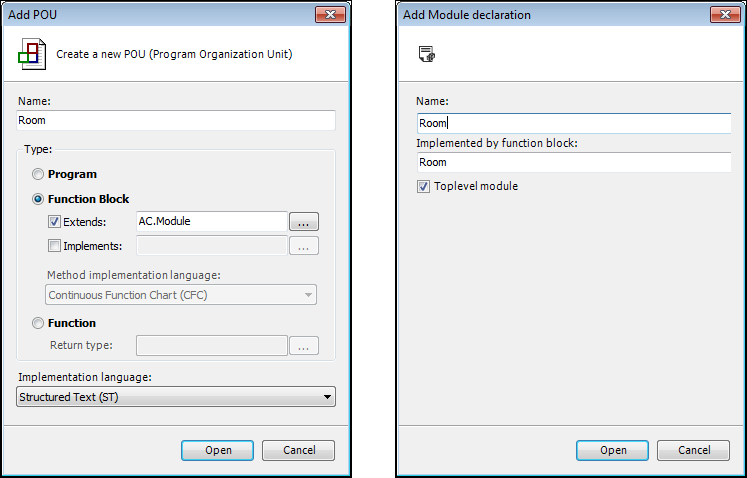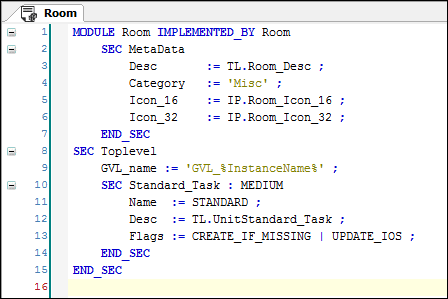Step 1: Create Toplevel Module "Room"
Add a module declaration and a function block to the POUs pool. The function block is used for the implementation (function program) of the module. In this example, the module and function block are given the name Room. Moreover the function block has to extend the base type AC.Module, which is part of the AC_ModuleBase library and provides a broad range of properties and functionalities. Since we don’t want to change the latter, all properties and functions, which are created with the function block, can be deleted.

The declaration starts with the keyword MODULE followed by the module name and IMPLEMENTED_BY and the name of the function block implementing the module, which is, for the case at hand, the function block Room. In this specific case, this is the Room function block. In most cases, the section MetaData is declared now. For detailed information about all parameters of all sections see the help pages in Module Declaration.
Because Room is the toplevel module in our example, the next section declared is the Toplevel section. The latter allows to define a name for the global variable list (GVL_name) including the instances of the toplevel function blocks after generation. After that, at least one more task must be defined in the toplevel section. This is Standard_Task in this example, which is defined as a MEDIUM task and contains the flags CREATE_IF_MISSING and UPDATE_IOS.
Room
All Icons and Strings, which are used for the description- and icon-placeholders of the module (parameters Desc, Icon_16 and Icon_32) have to be referenced from text lists and image pools. Having said this, an appropriate text list TL and image pool IP, which include all the referenced icons and texts, must be created and added to the POUs pool.
